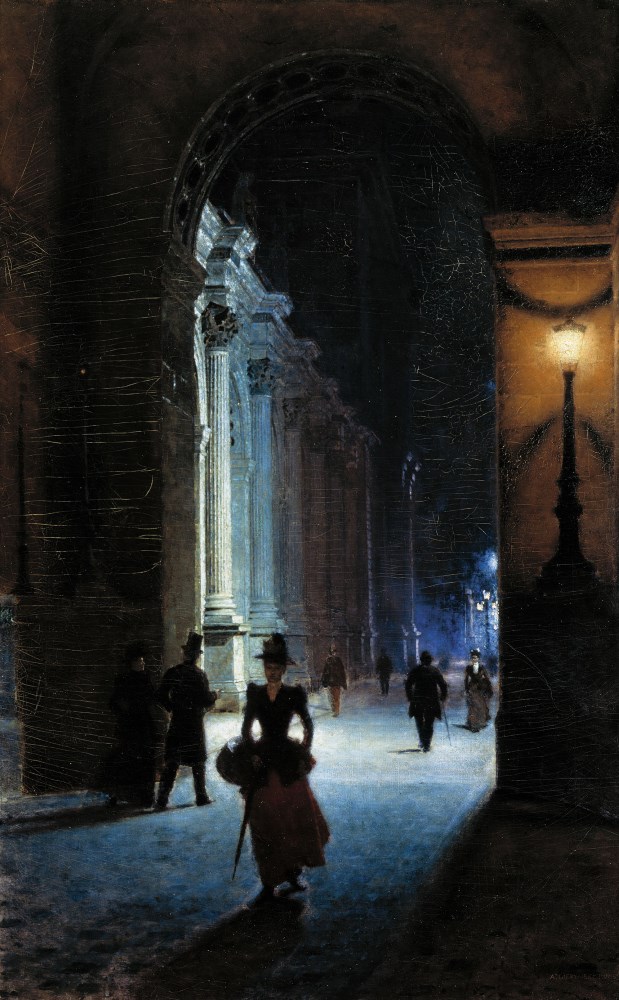Description:
Alexander Gierymski (1850-1901) began his studies in the Warsaw Drawing Class and continued at the Munich Academy, which he graduated with awards in 1872. After returning from Italy, he lived in Warsaw, where he collaborated with Stanisław Witkiewicz, among others, on the magazine “Wędrowiec”. At this time he painted genre scenes and portraits of poor Warsaw inhabitants, such as “Pomarańczarka”. Over the years, he changed his place of residence, visiting European cities. He exhibited his works both in Poland and abroad. At the beginning of his work, he was inspired by 15th century Venetian painting, focusing on the relationship between color and light, which became the main theme of his work. While staying in Munich and Paris, he created a series of urban evening and night landscapes, in which he dealt with the issue of artificial light. Towards the end of his life, he moved to Italy, where he focused on depicting the local views.*
Description of the painting:
Nocturne – a representation of a landscape or figural scene in a night setting. Created in 1892 as one of the series of urban night landscapes. The idea of capturing the night view of the Louvre courtyard appeared while painting the first version of “Paris Opera at Night” in 1891. The work is a tribute to the artist’s search in the field of light phenomena. In the nocturne, he perfectly conveys the juxtaposition of darkness and artificial lighting, which is differentiated according to warmth. In addition to the study of light that is this work, there is also a reflection on loneliness in an unfriendly metropolis.
Nocturne depicts an evening view of the interior of the Arc de Triomphe at the Place du Carrousel and a fragment of the courtyard of the Louvre. Gierymski used a convergent side perspective in the work. In the foreground is visible the arcade of the arch, under which the figures are walking. On the right edge of the image field, a lamppost is placed, shining with warm yellow light. The light diffuses on it giving a slightly warm halo to the female figure walking towards the viewer. At the massive pillar on the left side of the image field, in the half-light a couple dressed in black walking hand in hand is visible. Shadows cast by the figures indicate that a stronger light source is located in the background, behind the arch. There is depicted a fragment of the courtyard leading from the arch to the Louvre, illuminated by the cold light of street lamps. Behind the huge arch, the wing of the palace can be seen, to which light is falling from the lamps unseen to the viewer. The figures placed in the background are shown indistinctly, as if through the fog.
The space of the first and second plans contrast with each other in terms of lighting, both in intensity, color and temperature. The triumphal arch is bathed in warm light giving the space a natural hue. The bright light coming from the courtyard introduces a cool blue color into the foreground. The white, sharp, cold light illuminating the second plan almost transilluminates it. The artist uses its intensity to show the architecture of the Louvre’s wing in detail. Going into the square, the building begins to disappear into the shadows, only its outline remains, and the attention is drawn to the lamps – sources of light in the distance. The figures are blurred because they do not play a leading role here, they serve to emphasize the overwhelming monumentality of the architecture. They are a symbol of uncertainty and loneliness in a great, hostile metropolis. The urban space becomes a field for showing the light relationships, thus becoming a refined study of light.


